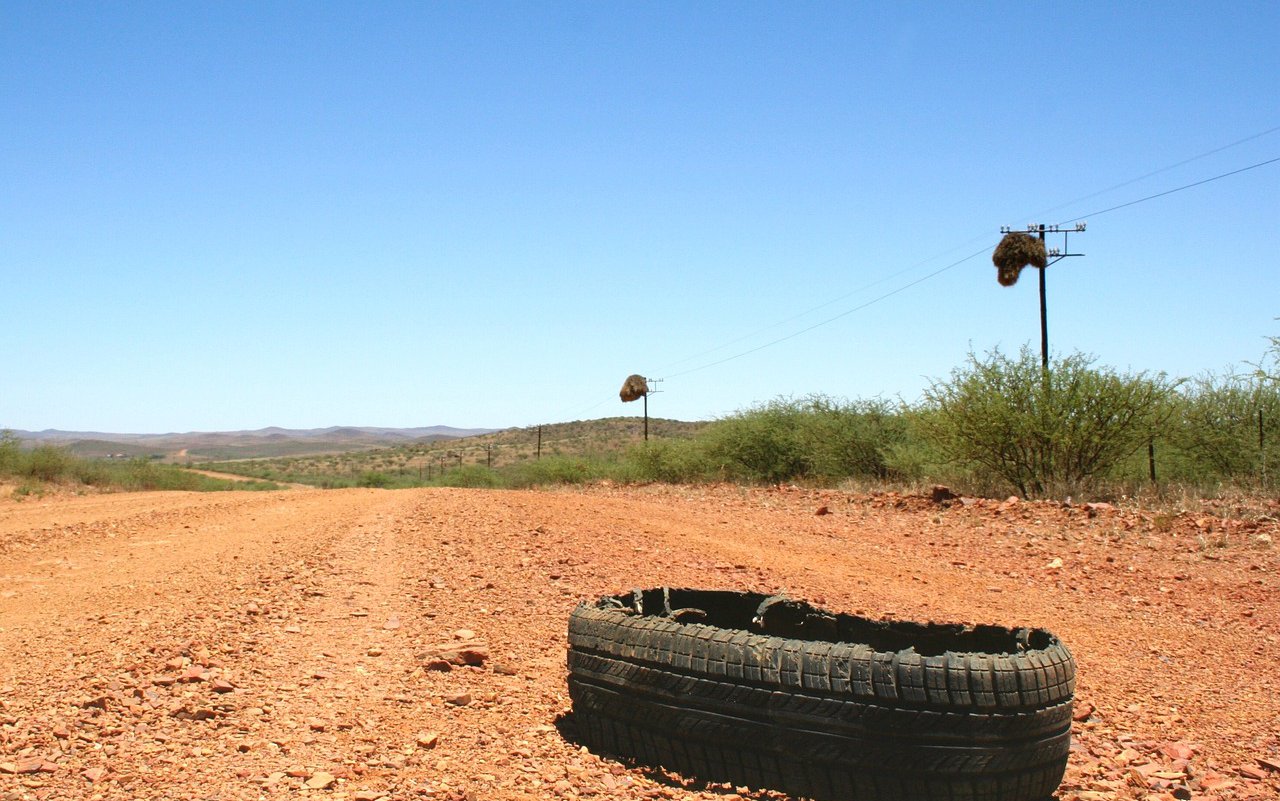
Beggars Would Ride
The 3 a.m. Tire Pressure Night Sweats
“21 psi.”
It was as if someone had spoken the words in my ear, jolting me fully awake from a dead sleep. Disoriented, it took me a minute to assimilate where I was. Home. In my own bed. 3 a.m. Same as always. While this was a far less jarring way to wake up than those nightmares I had as a teenager where I was jumping my motocross bike and kept going up into the air instead of arcing back toward earth, it was still a rude awakening.
Wish I could say this was a first, being woken up by a recited tire pressure, but it happens pretty often. It bears repeating that there are far more unpleasant ways to be rattled awake from a dead slumber in the zombie hours; earthquake, mountain lion in heat screaming outside, the unmistakable sound of a dog vomiting something unspeakable all over the floor, that dream where you are stuck inside a giant carnivorous plant that is trying to digest you and you have to cut yourself out from within its slimy, gore-spackled innards with a tiny decorative Swiss Army keychain-knife. Way worse ways to wake up, for sure. But none of them are near as common as the tire pressure recitation.

The stuff of dreams. Like this, only plant based, and you're inside it with a tiny Swiss Army knife for company...
The weird thing is, I am fairly certain I’m not being woken from some tire pressure dream. I sure hope not. My dreams, when I remember them, are generally angst-ridden abstractions. To be regularly dreaming about tire pressure – in this case, specifically dropping the pressure in a 29x2.5 Minion DHF with EXO+ casing from my usual 22 psi down to 21 – seems like a pedantic deep dive waste of a good subconscious reboot. But whatever the psychic root cause, being woken up by tire pressure is a thing.
For the first two decades of my mountain biking life, I never gave tire pressure much thought. Tires were all about the same size, we all had to deal with pinch flats all the time, and about the only variations in tire construction were choosing between wire bead or Kevlar. So, for me, almost all the time, the answer was “35psi.” Never less. Sometimes, if trying to flail around in exotic tire murdering locales like Moab or Sedona, I’d bump up to 45 psi or so and mutter apologies to my wrists and fillings while trying to limit my eyeballs jiggling as I pinballed along.
I was absolutely blown away when the very first UST tires and rims showed up, and I could run Hutchinson Pythons at 29 psi. That may have been where it started. That, or maybe when 29ers began to catch on a few years later, and mtbr forum nerds proudly boasted of being able to run their WTB Nanoraptor/Sun CR18 ghetto tubeless setups at 20 psi. Not sure if they were riding on a different planet, since I could never get any of those narrow rim, super light XC tires to stay in place with less than 30 psi in them. Below that, it was all squirm and burp and creased sidewalls. But the hook was set. Tire pressure had become a thing.
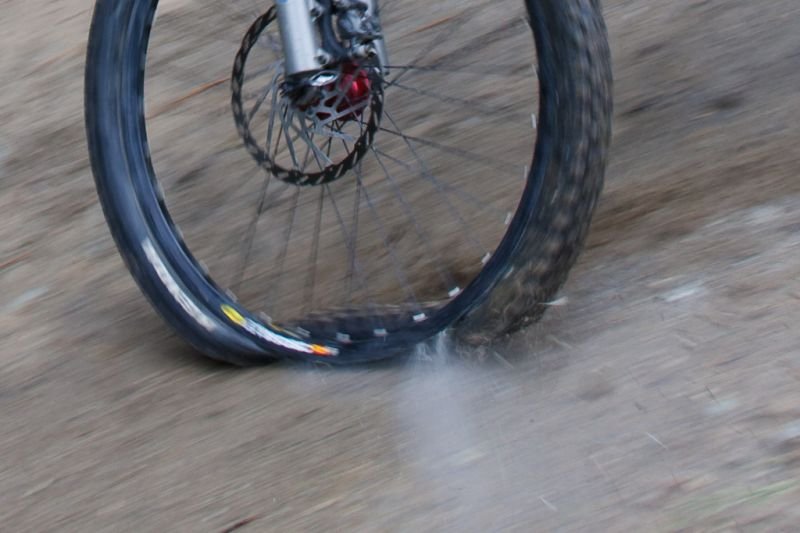
Aaaah, the early 2000's. A time of narrow rims, flimsy tires, quick release axles (remember those?!), and internet wisdom run amok.
I currently own three digital tire gauges, two dial gauges, and three floor pumps with gauges built in. The dial gauges are the standard for accuracy, and are used to cross reference all the other gauges. They never leave the toolbox in the barn. The digital gauges are deployed one in each ride pack and one in the van. There’s a stick gauge in the van as well, forgot about that. And there’s a stick gauge that came with the new quad I bought the ranch for Christmas (don’t judge) that stays with the quad. It tops out at 5psi. That low pressure stick gauge also comes in handy sometimes on the dirt bikes, which are running Tubliss kits and therefore sometimes get down around 3-4 psi. Super gummy dirt bike tires at 4 psi are total game changers in technical terrain, fyi.
But I digress. With mountain bikes, the past decade has been all about tire pressure. I was in a kind of sweet spot back around 2015, where I had accepted that Minions were awesome and given up trying to go uphill fast on flimsy tires. I had reached a happy place of 24 psi on just about anything that weighed 900-1000 grams and was a 2.35” width. Tubes were just a distant memory.
Then Plus tires showed up and totally kicked my happy place to the curb. I spent an entire year trying to get my head around those things, while factoring in tire weights that covered about a 600 gram swing from light to stout and rims that varied anywhere between 30 and 50mm in width. Ask me today what my preferred pressure is for any given Plus setup and I will probably convulse into a seizure. Somewhere between 12 and 20 psi? Maybe? Could be heaven, could be hell. How steep, how rocky, how fast, will there be any jumping, what’s the sidewall, 2.8 or 3.0, will there be a test afterward? I have a hunch that part of why Plus tires didn’t come to dominate mountain biking stems directly from the fact that they threw everyone’s tire pressure understanding out the window. There’s a bigger story there, and it deserves its own space. Another time, soon.
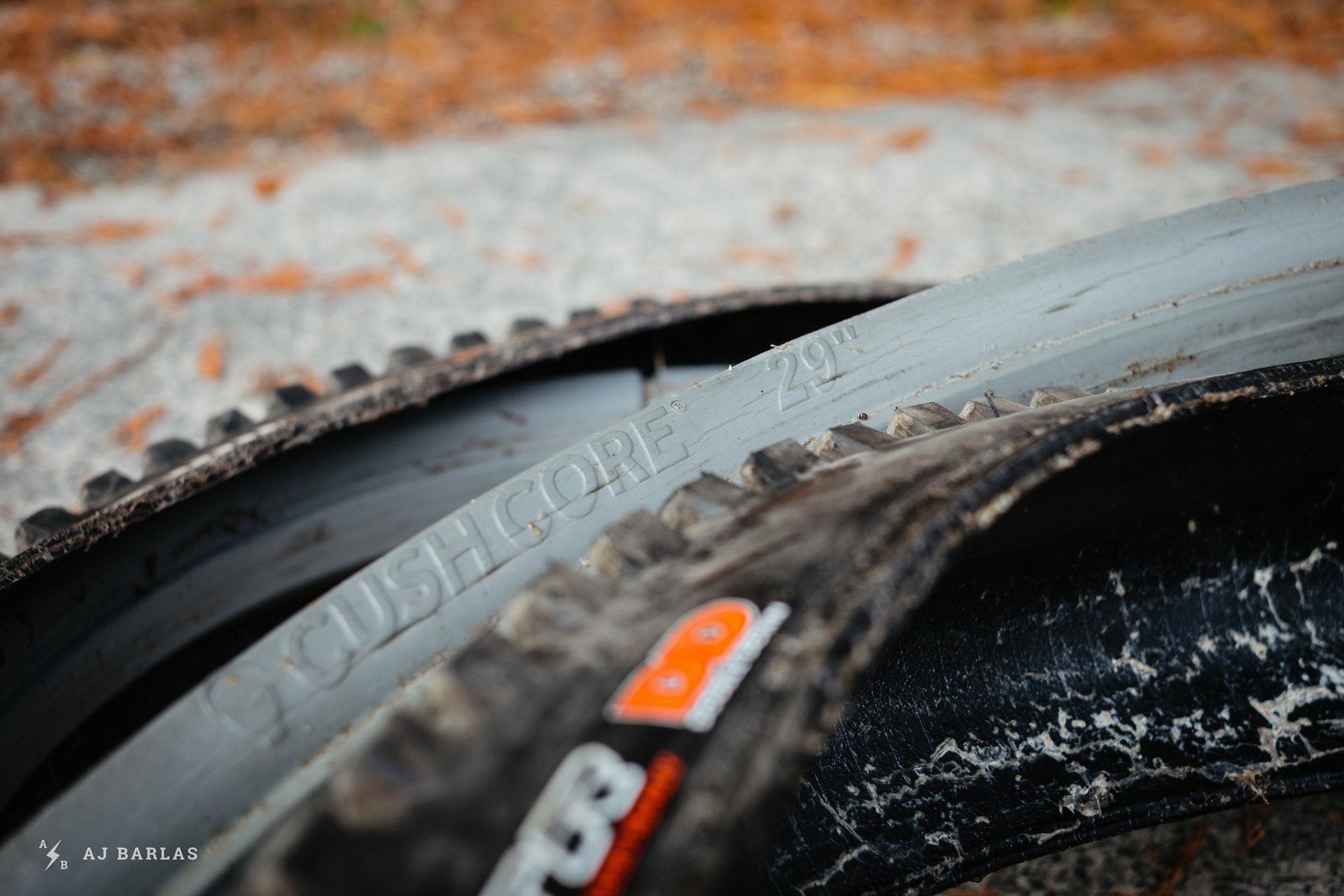
Spot quiz: DD casing, Cushcore, 185 pound rider, 2.4" tire, Whistler - what pressure? No Cheating. Photo blatantly poached from AJ's very well done ride comparison article on Cushcore here...
Right on the heels of the New Math of Plus came the myriad pool floaties. “A man leaves the Rincon parking lot traveling west at 5 miles an hour on a 1000’ climb. He weighs 185 pounds and is riding a 160mm travel bike with 29x2.6” tires. He is running CushCore inserts. What is his optimal tire pressure? Add 3 psi for any tire under 800 grams. Subtract up to 4 psi for any Double Down casing or similar. Add 2 psi per every .2” narrower variation in tire width. Subtract 10 psi and tell your friends it’s the best thing ever if you purchased the inserts after reading about them on an internet forum and subtract another 3 psi if you had someone else install them for you.”
It was around this point that I should have started a spreadsheet of some sort. But I didn’t. I tried to keep track of it all in my head. And that is when I started waking up at 3 a.m thinking about tire pressure.
I don’t really think of it as an obsession. It’s not keeping me awake at night, right? It just wakes me up. Sometimes. Like once every three nights. Two, tops. And I usually fall back to sleep pretty quick. By pretty quick I mean right after I pop downstairs to hiss a little air out of a tire and check it with a gauge. Or two gauges. No big deal. If sleep doesn’t come immediately, I can usually get there pretty quick by wondering just how far you could inflate a bouncy castle before it becomes dangerous, or what kind of pressure Bibendum, the beloved Michelin mascot, has inside his rubber intestines.
But really, it’s not a problem. I’m pretty sure everyone wonders what kinda pressure Bibi is running. At 3 in the morning. Right?
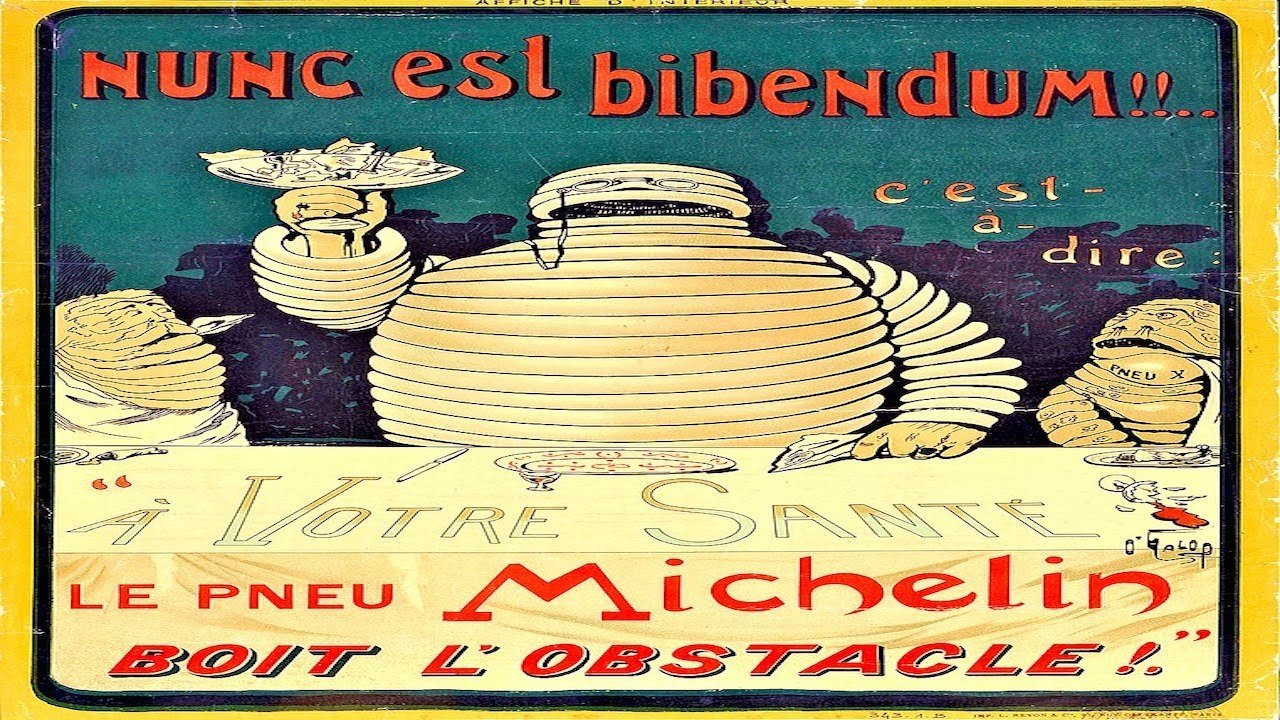
Back in the day, before he had to clean up his act, Bibendum was a King Dog boozer. No idea if he runs lower pressure now than he did then, what with going tubeless and all that fancy new compounding tech. But I guarantee he is nowhere near as fun to party with as he was in 1898...

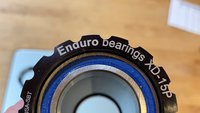
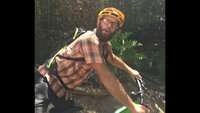
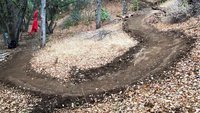







Comments
Vincent Edwards
2 years, 2 months ago
With absolutely no dis-respect intended towards other editors at this (or other) mtb publications…
I cant imagine another person who could write an article this engaging (and funny) about tire pressure. So glad to have you at NSMB Mike, this was a delight.
Bibendum… BiBrilliant if you ask me.
Reply
Pete Roggeman
2 years, 2 months ago
100% and we're so glad Mike's here!
Reply
Cam McRae
2 years, 2 months ago
Here here!
Reply
fartymarty
2 years, 2 months ago
100% - Keep 'em coming Mike, I could read your stuff all day.
Reply
Cr4w
2 years, 2 months ago
My mom would say you need to write some lists; download that stuff from your brain so you don't get anxious about forgetting something. Write it down so you know it won't get lost. Then go count sheep my dude.
Reply
Mammal
2 years, 2 months ago
That's amazing advice.
Reply
DanL
2 years, 2 months ago
I have 3 notebooks that float about containing all the lists. Keep one by the bed for those sleepless small hours of the night. Sheep indeed.
Reply
Vik Banerjee
2 years, 2 months ago
As someone who got on the Plus train with the OG Krampus and never got off [on some of my bikes] I agree that the tire pressure issue is a lot harder for Plus riders. You have to balance enough air for hitting rocks at speed with low enough pressure to get good traction and avoid bouncing around on an undamped air spring. And to be honest Plus is not great at everything so it's easy to over sell it and disappoint people. OTOH if your riding needs match up well with Plus tires it can be a sweet setup.
The MTB industry hyped up fatbikes and plus tires way too far and then a lot of riders who didn't need/benefit from those tech options bought in and were left holding the bag. We seem to have a really hard time saying "X is great for some stuff." It's either "Best EVER! For everything!!!" or it's not worth talking about.
Reply
Carlos Matutes
2 years, 2 months ago
I really enjoyed plus tires on low speed/flat rocky, technical terrain. And if I had that stuff nearby, I would definitely have a 29+ hardtail.
You’re right on with the idea that folks feel like if a product is not perfect for everything, they’re not good enough for anything.
Reply
bushtrucker
2 years, 2 months ago
Totally agree with this. I love plus tyres for long days on a loaded bike where you might not hit the perfect line every time. Bit for shorter trail rides on an unloaded bike I much prefer 2.4-2.6”. I think a lot of people riding plus tyres on unloaded bikes at relatively high pressures (20PSI+) has aided in their demise.
Reply
Karl Fitzpatrick
2 years, 2 months ago
Somewhere between 25 and 30 psi?
I'm blatantly and blissfully unaware of my exact tyre pressures and will happily blame a less than prefect run on my inadequacies as a rider than on my bike with all of its variables on top of tyre pressures.
Everyone needs to CALM DOWN. 😁
Reply
Cr4w
2 years, 2 months ago
I used to keep a post-in note chart on my storage doorframe for shock, fork and tire pressures. At this point the only lessons left are easy to follow. 21/24 for tires, checked before every ride. When temperatures drop below 10' I drop a couple of psi out of my fork and add them back when it warms up, usually in March. I switched to coil so my shock is good to go all year on the same settings.
Reply
Vik Banerjee
2 years, 2 months ago
I used to do this as well. One thing I appreciate on my coil sprung bikes is being able to grab them any time and having one or two less setup details I have to consider. On my SS hardtail with the coil fork I can get away with a quick bounce in my garage to see if tire pressure is reasonable and most often just head out for a ride. Before I put an insert in the rear of my hardtail that tire pressure would be pretty crucial to avoiding tire/rim damage. Now there is a wide enough range of pressures that don't lead to any problems that I can eyeball it so to speak.
Reply
Peter Appleton
2 years, 2 months ago
sounds like my days of Elite/Pro DH racing, the never ending discussions on tires, pressure and misleading your foes on that information ;-0
plus you didn't want to flat if you had an Intense DH tire on Double Wides, ya'd need motocross tire levers and an elephant for leverage
Reply
Dogl0rd
2 years, 2 months ago
Now that would make a good story!
Reply
Mike Ferrentino
2 years, 2 months ago
We used to do that on the start line of XC races too. Reach down, squeeze a tire of the guy next to you, suck in air through your teeth and shake your head...
Reply
Pete Roggeman
2 years, 2 months ago
Even better if you're missing a few front teeth...
Reply
Mark
2 years, 2 months ago
I once heard the story of a guy, who after hearing his buddy had put new tubes in the night before the race, let almost all the air out of his buddy's front tire when he wasn't looking and then suggested it would be a good idea to check his pressures as it's bad juju to swap parts out the night before a race. He brushed the idea off at first and then someone else who overheard the conversation said something similar and that he should check it. This was about 20min before the start of the race. Needless to say, hilarity ensued.
Name that NSMB member.
Reply
Pete Roggeman
2 years, 2 months ago
Tim Freaking Coleman. Final answer.
Reply
Mark
2 years, 2 months ago
You might think so but no.
Reply
SteveR
2 years, 2 months ago
Ha! I woke up this morning at 3'ish worrying about lasagna, but that's a whole other story (upcoming backcountry ski lodge trip) that has nothing to do with bikes. After a brief flirtation with plus, I've settled back again into running 29 x 2.3-2.4 with a variety of different tires and mfg's at 24 psi, all on the same width rims with no need to fret about a pound either way. Easy!
Reply
Ripbro
2 years, 2 months ago
Loved this article. I’m happy at 16 in the front and 18 out back. But I'm a flyweight, and have tannus out back (installed mayself)
Reply
Jason Bushey
2 years, 2 months ago
The real question is, how often do you check your pressures throughout your ride!? I've found the parking lot may differ than the top of the descent with altitude / temp changes. I had never checked throughout a ride until a race, but was surprised when I set out on a ride at 20psi and then 2 hours later it says 22.
Reply
Mike Ferrentino
2 years, 2 months ago
For all my home base pedantry, I almost never check pressure during a ride unless I think I have a flat. Years ago, when I was living in Downieville, Mark Weir took tire pressure obsession to a whole new level in his pursuit to dominate that race. He had an elaborate matrix written out, factoring in the pressure difference induced by the DH race starting 5000' uphill, as well as the usual 30 or so degree temperature swing that morning riders could encounter.
Reply
Mammal
2 years, 2 months ago
Your altitude or temperatures need to vary pretty dramatically for that to make a big difference out on the trail. I know I've personally experienced it when I set pressures inside my cool basement suite, then go ride without checking in the super hot summer sun, or super cold winter (probably a 15-20C difference either direction). I'm pretty damn in touch with my pressures these days, where I can definitely feel +/- 1 psi difference, and checking right before the ride seems to do it for me, but I'm also not usually descending more than 800 meters either.
Reply
Pete Roggeman
2 years, 2 months ago
Your column should have been called 'The At Home Pedantic'. Damnit.
Reply
mrbrett
2 years, 2 months ago
I definitely set my fatbike pressure at ride temp - 8 psi in the house can easily turn to mush on a cold day once the tires acclimatize.
As a less extreme example of temperature if you think of a mountain (like let's pretend you biked from Golden to the top of Mt 7), it's usually warmer at the bottom. Colder at the top so relative tire pressure lowers.
OK.
But, you also gained like 1200m so ambient air pressure changed too. Are your tires relatively more inflated as a result?
Is it a break even? The ideal gas law could tell us I think.
I don't have the skill to be on a knife's edge like that, where 1 psi might make or break a ride. My kind of janky riding can shine through almost any setup.
Reply
Mammal
2 years, 2 months ago
Yep, it's all about the PV=mRT, but I'm too lazy to do the unit conversions at the moment. I argued with someone about a similar situation, except with shock pressure. It turned out it needed to be a VERY big altitude change to make a difference, but I can't remember whether a reasonable altitude change made more or less difference than a reasonable temperature change.
Reply
JVP
2 years, 2 months ago
I've found that temp makes a modest difference, but altitude can add or subtracts a few PSI pretty easily. Set your pressure around sea level, then check at 1000m/3300ft you'll see a few extra PSI, even if it's colder up there.
The pros and their wrenches definitely have this all charted out. Would definitely scratch the nerd itch to see the actual numbers.
Reply
Pete Roggeman
2 years, 2 months ago
I think we may be able to dig into this a bit.
Reply
Lornholio
2 years, 2 months ago
I geeked out on this last summer while figuring out a new insert’s sweet spot for pressure and noticing that my pressure reading was always higher the top of 1000m laps and lower at the bottom.
Absolute pressure inside your tyres isn’t changing with elevation - it’s a sealed system with the volume of the tyre and number of air molecules inside it remaining unchanged. It’s to do with how pressure gauges work; they account for ambient air pressure which does change on a slight curve with altitude, which I simplified to 0.45psi per 1000ft for the elevations I ride. So pretty much 1.5psi per 1000m.
If you’re setting your pressure at home and are ignoring temperature changes don’t worry about it. But if you’re measuring pressure on the trail 1500-2000m higher than home, for example because it warmed up a lot since you set pressures in the morning or because you flatted, accounting for this is important.
This is worth a read, and there's a calculator for what you should set at elevation (feet only, no metres) which confirms my rounded calculations well enough.
EDIT: Looks like that link above is dead. Shame, the calculator worked great. I was looking it up for reference while riding at lower elevations on a trip. Here is that website's page on how pressure gauges work if anyone is interested, and here is a chart of atmospheric pressure to elevation - look up atmospheric pressure at your reference elevation (eg. 14.7psi at sea level) then look up atmospheric pressure at higher elevation (eg. 12.7psi at 4000ft) then compensate that difference if you're resetting pressure at altitude. So in this example you would set 2psi higher at 4000ft to have the same pressure that you would set at sea level. As I posted originally I simplified to 0.45psi change per 1000ft (1.5psi per 1000m) for the elevations where I live and ride regularly (1000-2500m) but it looks like this will get you within 0.1psi anywhere. Enjoy, nerds!
Reply
Jason Bushey
2 years, 2 months ago
TLDR: In general you likely won't see shifts over 1PSI other than in extreme situations. If its hotter and I'm higher than when I started, I may be 1-2PSI higher than I checked. If temps are dropping and I'm descending a lot, I may be 1-2PSI lower.
This calc also looks like it could help too understand heat, although built for a car. https://tirepressure.org/tire-pressure-temperature-calculator
Here is a geek summary of my thoughts:
1) As you go up 100m, your pressure increases almost 0.13PSI
2) For every +1 degree C it increases pressures increase around 0.1PSI
3) For every +100m in elevation, temps typically drop 1C
4) Typical days (for me) temps increase 1-3C per hour in the morning, and drop 1-3 at night.
Heres two extreme examples: I live at elevation so numbers reflect.
Let's say I started at 9am at 2700m, it was 13C set the PSI to 20. Now I climbed up to 3600m and it takes me 3hrs to get there. In that period, temps likely increased 8C (+0.8PSI), but my gain in elevation (+900m) decreased temps -9C (-0.9PSI), and altitude adjusted pressure +1.2PSI. So now I have 21.1PSI.
The worst case scenario for flats would be the latter half of the day where the temp is decreasing and you are losing elevation from when you first checked pressures. Let's say for example you checked pressures at 1pm, 3200m and 21C and set it to 20PSI. Now its 6pm, 13C (at bottom), and you are finishing your shuttle day at 2700m. The air will drop pressures -0.8 and the elevation -0.66 so now you are at ~18.5PSI when you finish your run.
JVP
2 years, 2 months ago
Well howdy doo, I learnt something today.
Justin White
2 years, 2 months ago
"but altitude can add or subtracts a few PSI pretty easily"
Altitude changes add or subtract from GAUGE pressure, but the actual pressure in the tire doesn't change: same volume and same temp* means same pressure. The tire is still going to offer the same support and conform to the ground in the same way.
Where as temperature changes will effect the actual pressure in the tire. I've heard that an average car tire swings about 1.5 psi for every 10 degrees C. Bikes seem similar: I think I've seen about a 4 psi drop when taking the bike from room temp to just about freezing.
* (yes, the less outside pressure technically means the tire will try to "inflate" a bit more, increasing the volume and reducing the pressure, but I think that's negligible when we're talking just ~2psi (1000 meters up) vs the tire casing)
** (for now disregarding the temp changes that come with altitude changes, which seems to be about 6.5 C per 1000m)
*** Lornholio seems to have nailed it.
Reply
Mammal
2 years, 2 months ago
I also spent my first 20 years of mtb blissfully unaware of my exact tire pressure, and just relied on the old squeeze test. It seemed reliable enough, and could be used to guestimate what I would need for different terrain, speeds, equipment etc... "Hmmmm, maybe a bit more/less".
About a year and a half ago, I bought a digi-gauge, after deciding I wanted more consistency from my tire relationship. I was tired of realizing I needed "just a touch less pressure" if it was wet or icy. I was tired of dinging rims because my squeeze-gauge wasn't calibrated properly due to chilly hands, or my usual squeeze location was covered by a fender. I run very similar tires across both my tubeless bikes (DH bike is on tubes), which helps reduce the data points. 2.5WT EXO Minions on my 29er 160/150 bike without inserts, and the same for my 27.5 hard tail, only with Tannus inserts in those. Now I know that my perfect combo for max grip while not pinging rims or folding over sidewalls is 19.5F/21.5R on the suspension bike and 17.5/18.5 on the hard tail (+/- 0.5psi for faster trails, rockier terrain, or wet/icy surfaces).
"Game changer" is completely overused, but it really has been. So much more consistency in tire performance now, and my rims are so much happier with me. I only went tubeless in 2011 (26" Crossmax - SO NICE TO SETUP!), but knowing I could have been enjoying this performance boost for the past 11 years is ludicrous.
Reply
Pete Roggeman
2 years, 2 months ago
I think many of us got used to getting away with the squeeze test, but larger tire volumes make it ever harder to get right. Plus tires were one side of that spectrum (we're leaving FAT tires out of this conversation) but 29 WT are close enough that it's just as tricky to rely on your digits to give you the right digits.
I have had countless conversations with people who ride modern bikes that they paid a lot of money for. I'll ask what they run, they don't know, or say they use their hand. Ok then, I say, give 'em a squeeze and tell me what you think you're running. Out comes my digital gauge, and there have been a lot of raised eyebrows.
1) I've helped sell a lot of digital gauges to people that formerly didn't think they needed one.
2) I carry a digital gauge along on just about every ride, and sure as hell check my pressures before every ride.
Reply
Mark
2 years, 2 months ago
Do you walk around the trail heads starting up these conversations and when the time is right pull a digital gauge out of your pack to sell to unsuspecting "customers"?
Reply
taprider
2 years, 2 months ago
He probably wears a trench coat with rows of gauges lined up on the inside
Reply
Pete Roggeman
2 years, 2 months ago
Just buddies but maybe I should buy and brand some gauges off the shelf and start selling them. From under a trench coat.
Reply
jason
2 years, 2 months ago
This is sooo my experience. For many years (going back to 1998), the squeeze test was the only way to determine pressure. Sometimes we would pump up the tire to ride up and then let out some pressure for the way down. But this was all done by squeeze. I finally got a digital gauge a few years ago and was gob smacked at how off my squeeze test was. To the tune of 10-20lbs off what I thought the pressure was. This sort of speaks to why there were so many pinch flats, or why I had no traction as my tire pressure was too high.
Riding in winter on the north shore with DH tires (all my bikes have DH, with no inserts) I use a room temperature pressure of 21F/23R. If it is 5 C outside(20C indoors when the tire was pumped up) the pressure in my tires actually drops 2-3 lbs. Which is ok on a cold wet day when I am riding slower and things are greasy.
In summer I run 22/24 due to the higher speeds. Whistler is 28/29.
I have tried to convince my riding buddies of the need for digital gauge but to no avail. They don't know what they are missing!!!!
Reply
Pete Roggeman
2 years, 2 months ago
Try the make em guess trick. My best days on the bike are always tied to having the pressure dialed for the trail, conditions, and my speed on the day. My worst days usually or at least sometimes are partially attributed to tire pressure. It's not a coincidence.
Reply
Justin White
2 years, 2 months ago
"Spot quiz: DD casing, Cushcore, 185 pound rider, 2.4" tire, Whistler - what pressure?"
Front or rear? Rim width? A-Line jumps, or Garbo-zone tech?
Ffzzzzttsss...boom, oops, brain-melted.
Reply
mynsmbself
2 years, 2 months ago
30 PSI in my minions,
i don't care about your opinions
Reply
Andy Eunson
2 years, 2 months ago
Pressure is something I don’t watch carefully enough. My rims go thunk thunk on a root and I’ll add some. Then check at home. At my weight, 142, I don’t need that much air 15 in a 2.6 is as low as I go and 17 in the back. Sometimes when I check my pressures I’ll find I was at 12 or something stupid. I tried Tannus tuneless inserts but all they did for me was add weight. I don’t pinch flat, I don’t ding rims. When I tested lower psi I found the tires were folding over and I needed pretty much the same psi as without inserts. I tries 2.8 as well but same thing. I don’t think my rims at 30mm were wide enough to see any benefit of a 2.8.
Reply
Pete Roggeman
2 years, 2 months ago
If you occasionally bottom out but don't dent rims or pinch flat (or fold the bead or experience squirm in corners) then you're probably a-ok at that pressure.
Reply
cheapondirt
2 years, 2 months ago
I'm insert-curious, but you may have just saved me the effort of trying. I'm 160-165lbs and typically run 16/18 or 18/20 psi in 2.6 tires, weather and trail dependent. I also don't tend to damage rims or tires, but if I'm riding somewhere new or faster than usual, I usually err too high with the pressure and get the basketball effect.
Inserts were one potential solution but I'm leaning toward trying a 2.4" rear tire first, with a medium-duty casing instead of my current EXO.
I'd agree with your assessment that 30mm is too narrow to best support a 2.8.
Reply
fartymarty
2 years, 2 months ago
I've been on Tough Vigis (w/o inserts) for about 9 months now and like the damped feel - 2.3s are ~1150g so not stupidly heavy. They're so much better than the EXOs they replaced. It's worth trying heavier casings even if it gives you a basis for comparsion.
Reply
fartymarty
2 years, 2 months ago
I've gotten to the point where i can't ride if I haven't made sure my tyre pressures are bang on for a particular tyre.
Saying that i'm on 2.3 Tough Vigis all year round and they could probably go into mid / high teens without too many issues.
Reply
Justin White
2 years, 2 months ago
"three digital tire gauges, two dial gauges, and three floor pumps with gauges built in"
Wow, same! Although one of my dials is presta-only (0-30psi, lives in the shop), and the other is schrader-only (0-60 psi, lives in the car). And there might be a schrader-only digital in my wife's car...
Amazingly they all read pretty close to each other, within ~1 psi in my usual range of 18-25 psi, except for the one pump gauge that reads 4(!!) psi low.
Reply
MTB_THETOWN
2 years, 2 months ago
On my enduro bike 23/25 wild enduro 2.4s and xc Cushcore. On my hardtail 23/23 with 2.6in Vittoria Mazza and agarro with full Cushcore rear only. I set it with my Milwaukee inflator, which makes it very easy to be consistent, but I have other gauges that say other things sometimes.
Tires are the first part of your suspension, and for experienced riders it seems like mostly preference within a reasonable range.
I think the Michelin man is like 3 PSI, tops.
Reply
Velocipedestrian
2 years, 2 months ago
That burp picture looks familiar. Is it a piece of ancient vorb history? Maybe taken by Zane?
Reply
Mike Ferrentino
2 years, 2 months ago
I was gonna try to deny everything, chalk it up to the random capriciousness of google image searches, plead the fifth... But I dug up the link where that image came from, and you are correct:
https://mountainbikingzane.wordpress.com/2009/09/23/diy-tubeless-goo-for-mountain-bike-tyres/
I am at once both impressed and disturbed by your clarity of recall...
Reply
Velocipedestrian
2 years, 2 months ago
Ha! How many degrees of separation between mountain bikers in NZ?
I recently rebuilt his old Horst 5spot (again) after finding a crack in my partners seatstay.
And yes, you're not the first to be perturbed by the freaky detail recall tricks my brain comes out with. Pity I've never found a practical use for it.
Reply
Glass
2 years, 2 months ago
Schwalbe Eddy current front tyres on both wheels in super trail casing with cushcore front and back and lightweight tubes. 12psi front and 15psi back for trail riding and 15/18psi for bikepark/DH/rocky terrain riding. I weigh 60kg/132lb and my Nicolai G1 has 203/212mm of travel.
Reply
Eric Nelson
2 years, 2 months ago
Great article. I keep a note with pressures desired in my phone for the various bikes.
Reply
KenN
2 years, 2 months ago
All I know for sure is, if you're not running different pressures front/rear, then you're not part of the cool crowd.
Reply
Please log in to leave a comment.